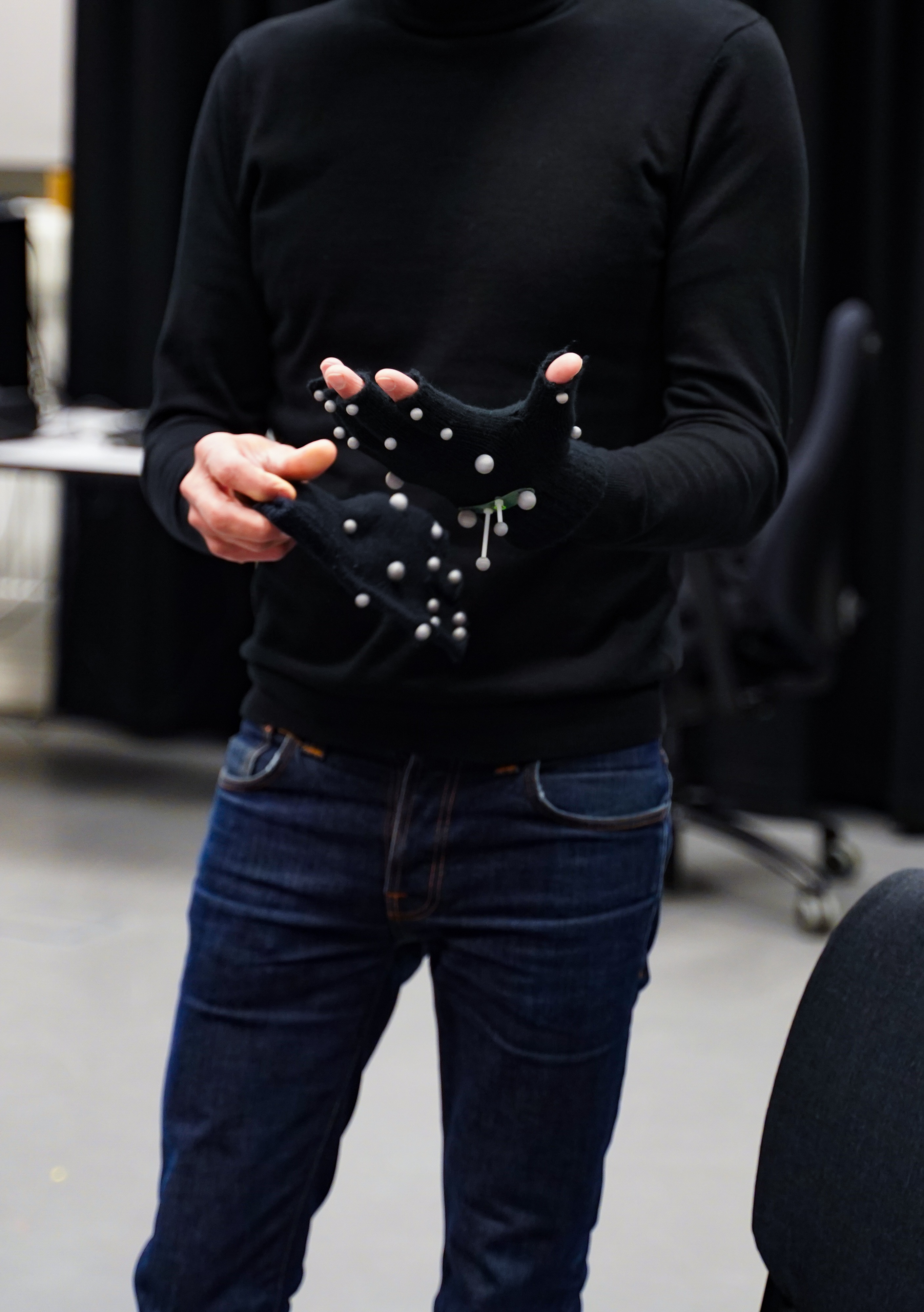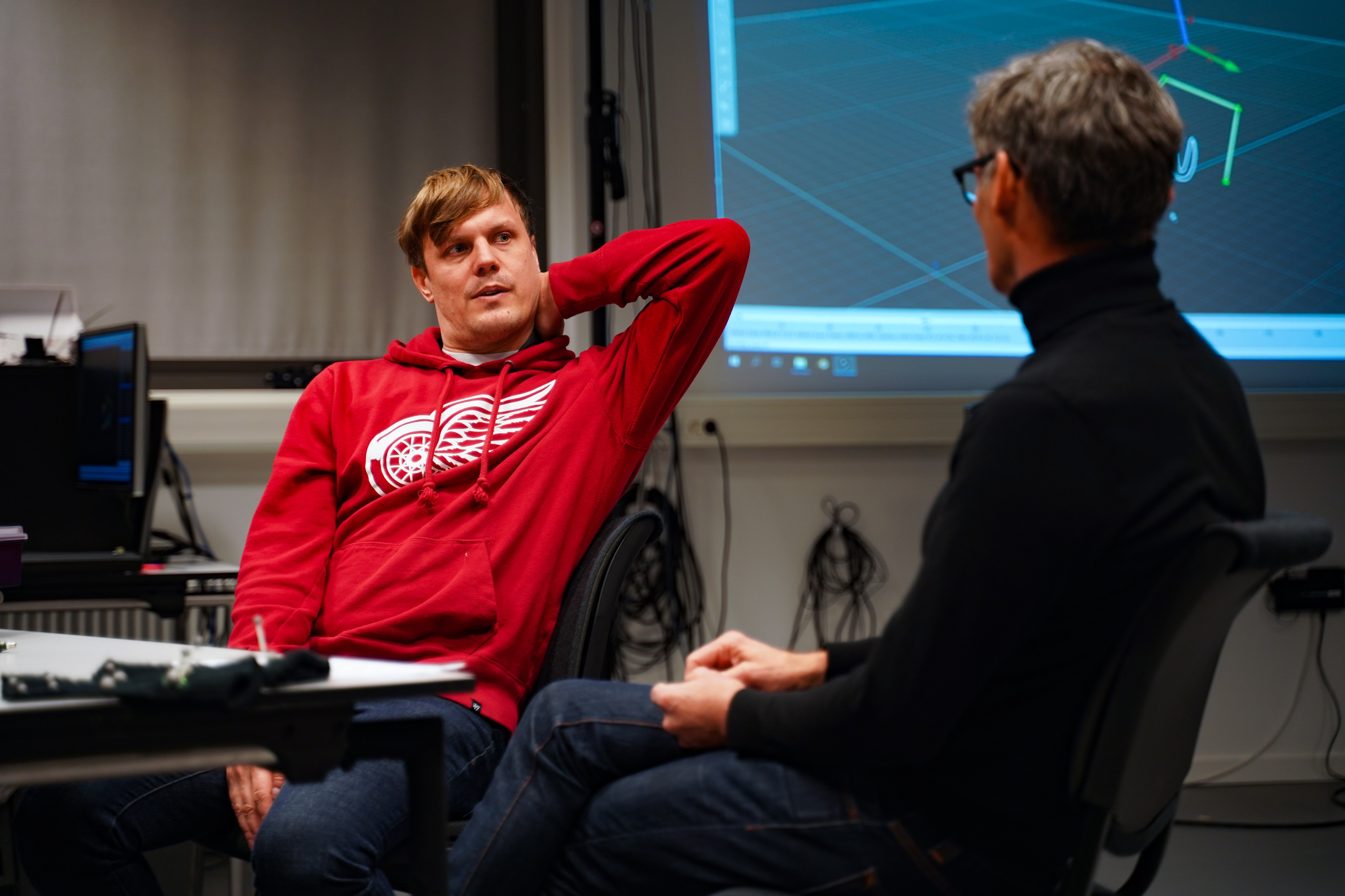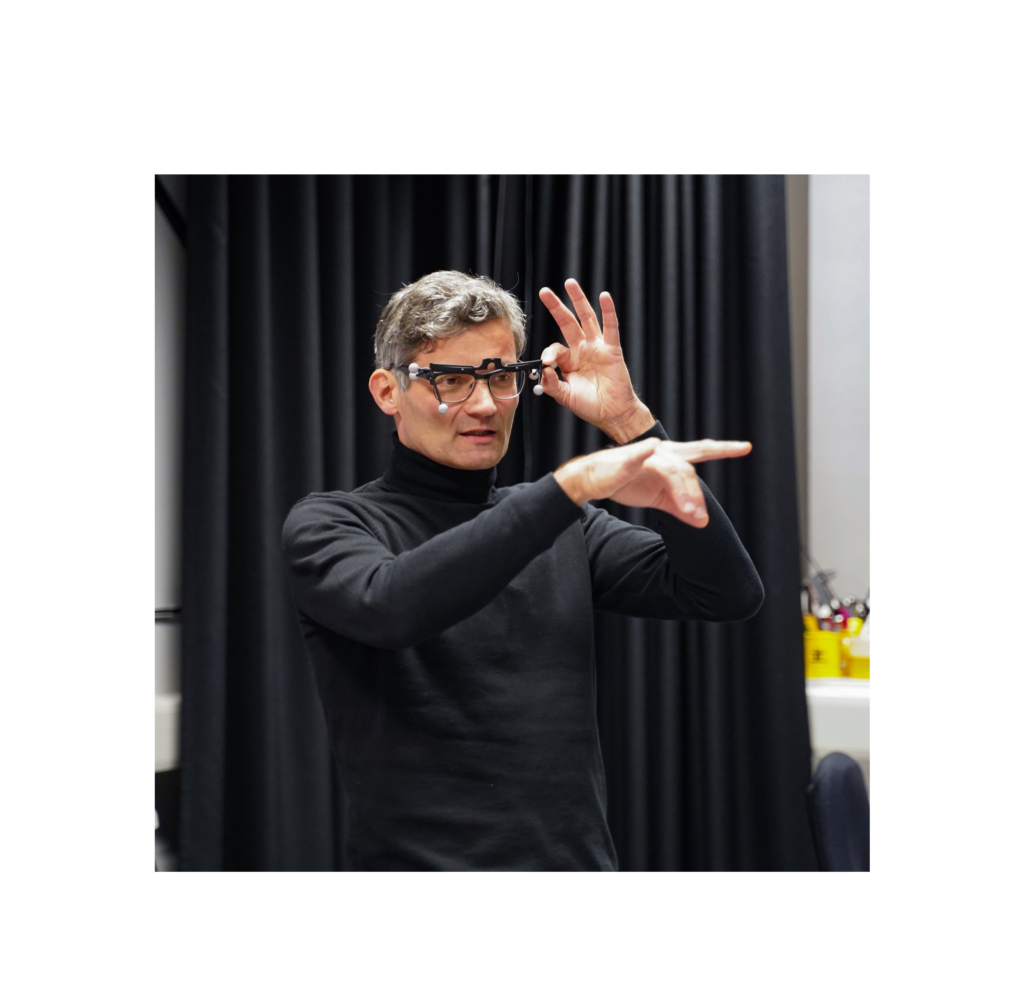At the far end of Lund University’s LUX campus for the humanities lies its little-known motion capture studio. First founded in 2007, it now boasts a long list of interdisciplinary research projects. To those working there, however, outsiders have yet to recognize its full potential.
It’s a square empty room, with a total of eight cameras positioned along its walls. On the floor, white tape marks the recording space.
This is the motion capture studio, part of the larger Humanities Lab. Here, I am greeted by Jens Nirme, a Ph.D. student with the Educational Technology Group at the Department of Philosophy and Cognitive Science, and Henrik Garde, who is a Systems Developer for the Lab.
My first question is how the two came to work with motion capture.
Jens Nirme earned his master’s degree in Cognitive Science and Interactive Media at the Universitat Pompeu Fabra in Barcelona, Spain. Before returning to Sweden to pursue his Ph.D., he spent several years in Barcelona helping develop games for stroke patient rehabilitation.
At first, Jens Nirme tried setting it up a full-time accredited course, but finding students proved challenging. Instead, he has held a motion capture tutorial, open to all who would participate, every other semester. It’s one of several tutorials, walkthroughs, and courses offered by the Humanities Lab.
“There seemed to be more of a demand for that kind of thing”, he says. “The tutorial has turned out to be pretty popular.”
Henrik Garde has a background in Humanistic Computer Science, and spent seventeen years creating ship simulators for training purposes in Copenhagen, Denmark. At Lund University, he works across faculties to help solve programming challenges related to research.
“Working with the Humanities Lab really appeals to me. You never know what the next researcher will ask for.”
“Ideally, researchers turn to me when there’s something they want to implement in an experiment but don’t know how. Sometimes, this might be as simple as directing them to one of our tutorials. The main goal is to make sure that everyone knows how to help themselves.”
To some, motion capture may appear a mathematically challenging field, open only to those with rigorous training in the hard sciences.
“Of course there’s a lot of technical stuff that goes on under the hood,” Jens Nirme says.
“But that doesn’t mean that the technology is, or should be, off bounds. It’s all about the question you’re trying to answer.”
After all, social scientists have long since outsourced much of their analyses to statistical software like SPSS. A researcher needs not to understand every intricacy of some tool to make good use of it.
Besides, in terms of its function, the motion capture concept is not difficult to grasp.
MoCap technology typically involves a systematic recording of movements by some subject (e.g., a film actor) in three dimensions. Equipment worn by the subject is fitted with strategically placed markers that reflect infrared light back to the cameras, which capture the actions.
I’d like to see what this recording process looks like in action.
“Here, I’ll show you,” says Henrik Garde.
He rises excitedly and brings out a pair of fingerless gloves fitted with markers so as to trace the joints of the hand.

Equipment like this has been useful to Jens Nirme, some of whose research has focused on the topic of gestures.
To demonstrate, Henrik Garde puts on the gloves and flexes his fingers. He strikes a variety of different poses, leaning forward with fingers knitted over his knees; stretching with one hand hidden behind his neck; hands moving back and forth through space as they might when one is conversing.
“Sometimes, there’s a problem with occlusion,” he says.
“When you move naturally like this, joints may be covered up from the sights of the cameras. When those joints become visible again, it’s not a given that the system will pick it up again. It confuses easily.”
Some solutions come easy, however.
“If you know what movements to expect, you can often prepare beforehand,” says Jens Nirme.
“Sometimes you can get away with just repositioning the cameras.”
All this still leaves the question of what kind of research questions can be answered with the aid of motion capture.
Motion capture has proven useful in a perhaps surprisingly long list of disciplines. At the MoCap lab alone, it has been used for research in linguistics, communication, archeology, and cognitive science, with applications in everything from virtual reality, training simulations, to computer vision.
My hosts want to show me a recording. Typically, raw motion capture data is projected in a 3D space, with on-screen dots representing the markers. In this case, the resulting stick figure is moving its joint in the unmistakable manner of a conductor conducting a choir.
Henrik Garde explains that the recording is of a conductor working at a different college, a recent visitor to the lab.
“She was really excited by the possibilities for using this kind of technology in teaching.”
When seen, this application seems perfectly natural. Scaled-down and viewed up close, footage of intricate gesturing becomes easily intelligible.
Of course, even this technology has its limitations.
“We tried having someone guess what piece she was conducting,” says Henrik Garde and laughs.
“But I guess the technology isn’t quite there yet.”

The common perception of motion capture is mainly as a tool in entertainment. For a long time, the film and video game industries have been the biggest drivers of progress in motion capture technology.
This widespread view is slow to change, as motion capture research is still relatively rare. This state of affairs is subject to many variables, one of which is poor incentives.
“Science is open access, and companies are not keen on giving away their findings for free,” says Jens Nirme.
Another problem may be raw costs. While there are cheaper systems available, the more precise and flexible equipment available at the motion capture studio in Lund might simply prove too large an expense for most.
Henrik Garde does not think this is the determining factor, however.
“We have the expertise, the equipment, and the infrastructure,” he says.
“Not having all those things in one place makes it difficult for others to establish a similar studio elsewhere.”
In research, however, some of the apparent costs may be made up for ineffectiveness. Oftentimes, manual video analysis means going through recorded data frame by frame.
“It is an incredibly time-consuming process,” says Jens Nirme.
“With motion capture, data analysis is essentially automatized.”
In addition, Henrik Garde points out, such video analysis is often a largely subjective process.
“Sometimes researchers might imagine they see particular movements that aren’t really there. With extensive recording like the kind we have here, analysis becomes much more objective.”
“Many hear motion capture and think of animation. They think full-body avatars. In reality, motion capture allows for detailed close-up capture of most any part of a moving body.”
The limits, then, are not set by the equipment, but by the researcher. After all, technology does not exist arbitrarily for its own sake, but for the select purposes of its users.
For anyone interested in human behavior, the MoCap Studio provides an environment for extensive, close-up study.
The real limit is a researcher’s imagination.
“Researchers in the humanities should know the possibilities of working with this technology,” says Jens Nirme.
“At the very least, they should know what is available.”









